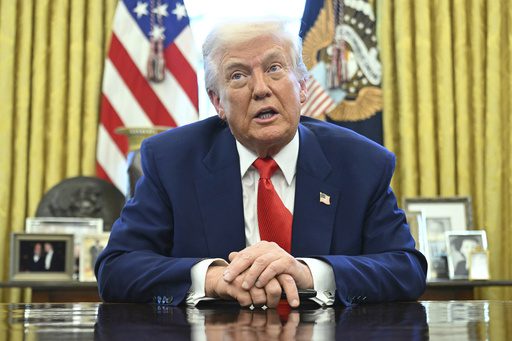In a whirlwind week that left markets shaken and global leaders on edge, President Donald Trump did what few expected — he announced massive tariffs, only to pull back just days later, triggering wild swings in the economy.
“You’ve got the markets seeing your brilliance,” said Sen. John Barrasso to Trump — a moment that summed up the president’s self-confidence during this high-stakes gamble.
Initially, Trump had imposed sweeping tariffs on dozens of countries, including:
- 125% on China
- 25% on Canada, Mexico, the EU
- 24% on Japan
- And even higher on countries like India (26%) and Cambodia (49%)
This bold move was dubbed by Trump as “Liberation Day”, with American flags draped along the White House as he presented a giant chart of tariffs. But within seven days, everything changed.
Markets Panic, Then Rebound
The stock market, which had already been volatile, crashed with its largest single-day drop since the 2020 pandemic. Businesses halted plans. Coffee roasters in Seattle worried about bean prices. Carmakers like Stellantis paused production, and Tata Steel in the Netherlands laid off 1,600 workers.
“This just accentuates the policy uncertainty,” said William Reinsch, a former U.S. trade official. “How does anybody know he won’t change his mind next week?”
And that’s exactly what Trump did.
Just days after the chaos, he reversed course, rolling back most of the tariffs and claiming that his moves were part of a master strategy.
“You have to be flexible,” he said, despite having previously insisted he would never budge.
Read Also: Trump wants to play market hero. But the economic damage is done
Mixed Signals and a Divided GOP
While the White House framed the decision as strategic, confusion reigned. Some Republican senators were left scratching their heads.
“I’m just trying to figure out whose throat I need to choke,” said Sen. Thom Tillis, frustrated with the lack of clarity.
Others, like Sen. Ron Johnson, simply asked, “Does anybody understand the strategy?”
Even Trump’s own Treasury Secretary Scott Bessent and press secretary Karoline Leavitt gave conflicting statements on whether the retreat was based on market performance or preplanned tactics.
Trump later admitted: “I was watching the bond market.”
What’s Next?
As of now, some tariffs are paused for 90 days, giving time for potential negotiations. But the global economic damage — and uncertainty — has already begun.
This episode highlights a bigger issue: the fragility of modern trade and how a single decision can send shockwaves across economies.
In a world of instant reactions and global dependencies, “flexibility” might not be enough.
Will Trump strike new deals or return to more tariffs? Only time — and maybe his next social post — will tell.

